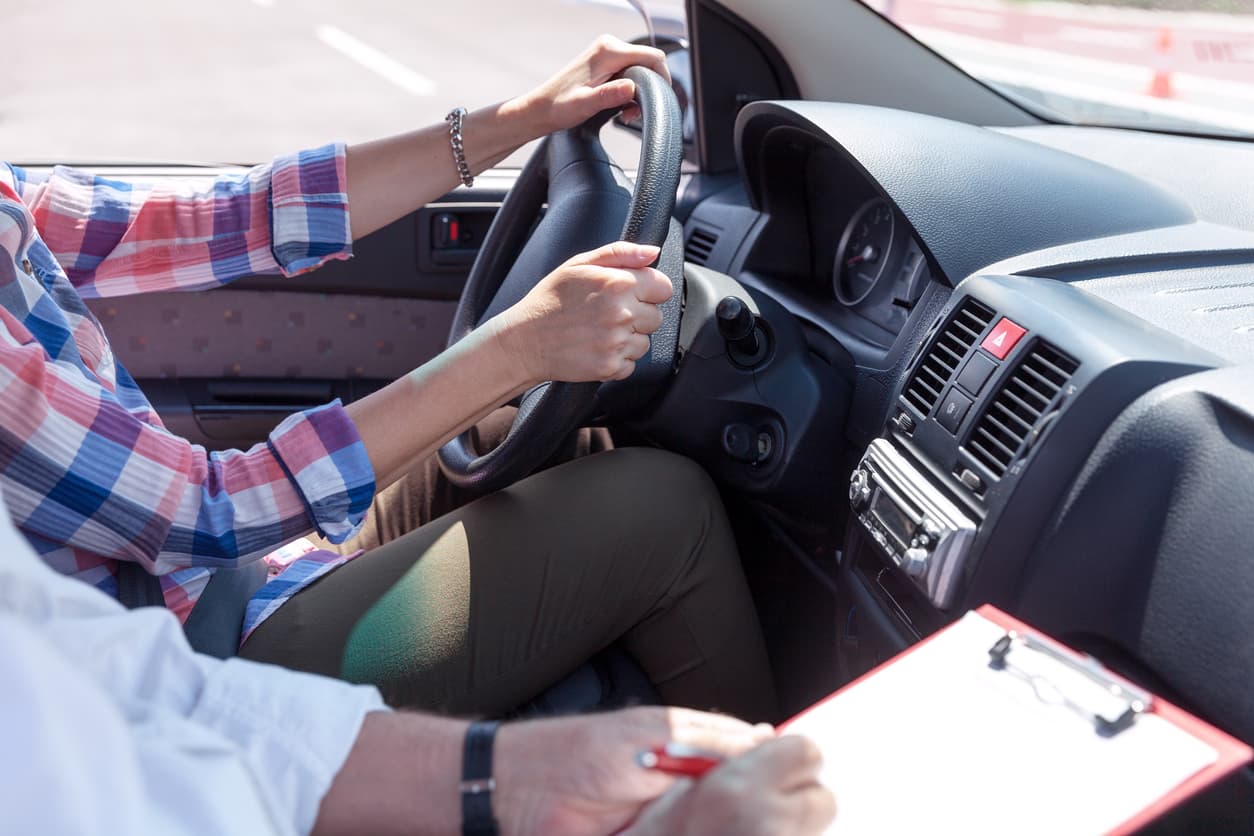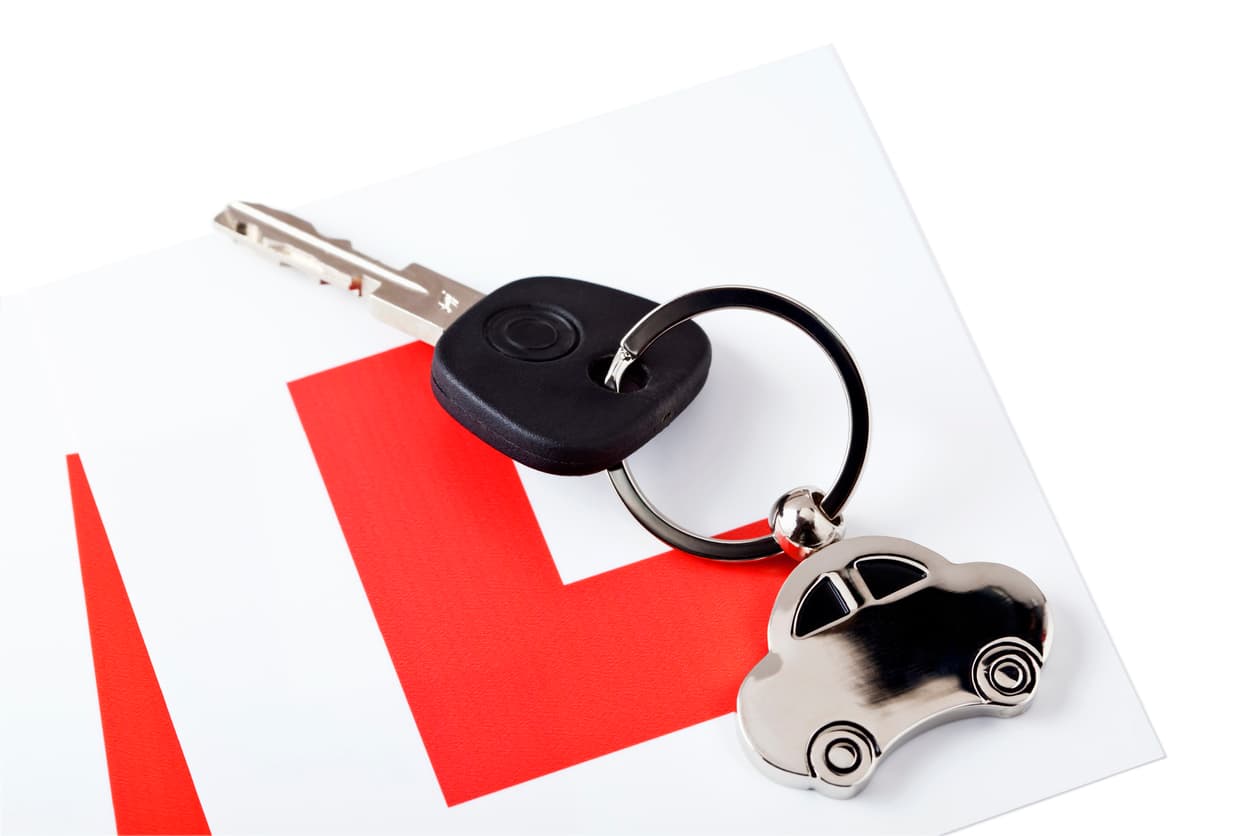運転できる自動車の乗車定員は、運転免許によって異なります。普通免許と準中型免許の場合、乗車定員10人以下の自動車を運転できます。より多くの人を乗せられる車を運転したい場合は、準中型免許の2倍以上の人が乗れる自動車を運転できる「中型免許」を取得するのも手段の一つです。
本記事では、中型免許で運転できる自動車や取得方法などを解説します。教習所通いと合宿免許の取得費用の違いもあわせて解説するので、中型免許の取得を検討している人はぜひこのまま読み進めてみてください。
目次
中型免許の最大乗員数は29人まで

平成19年年6月2日の改正道路交通法の施行により、普通免許と大型免許の中間的な位置づけとして中型免許が新設されました。中型免許では車両総重量5トン以上11トン未満、最大積載量3トン以上6.5トン未満、乗車定員11人以上29人以下の自動車を運転できます。
| 運転免許の種類 | 車両総重量 | 最大積載量 | 乗車定員 |
| 普通免許 | 5トン未満 | 3トン未満 | 10人以下 |
| 中型免許 | 5トン以上11トン未満 | 3トン以上6.5トン未満 | 11人以上29人以下 |
| 大型免許 | 11トン以上 | 6.5トン以上 | 30人以上 |
法改正前のマイクロバスは車両総重量8トン未満、最大積載量5トン未満、乗車定員11~29人までの枠内の大きさに設定されていたため、普通免許でも運転できました。しかし、法改正でマイクロバスが中型自動車として扱われるようになったため、普通免許では運転できなくなりました。
そのため、法改正以降にマイクロバスを運転する場合は、中型免許が必要となっています。
中型免許と準中型免許の違い

平成29年3月12日の改正道路交通法の施行により、車両総重量3.5トン以上7.5トン未満、最大積載量2トン以上4.5トン未満、乗車定員10人以下の準中型自動車が新設されました。準中型免許は、人手不足が深刻な物流業界の要望を受け、若手ドライバーを確保するために新設された経緯があります。
| 自動車の種類 | 運転免許 | 車両総重量 | 最大積載量 | 乗車定員 |
| 準中型自動車 | 準中型免許 | 3.5トン以上7.5トン未満 | 2.0トン以上4.5トン未満 | 10人以下 |
| 中型自動車 | 中型免許 | 7.5トン以上11トン未満 | 4.5トン以上6.5トン未満 | 11人以上29人以下 |
中型免許は、11トン未満の自動車を運転できます。一方の準中型免許は7.5トン未満の自動車しか運転できず、また取得条件が異なります。
| 取得条件 | 準中型免許 | 中型免許 |
| 年齢 | 18歳以上 | 20歳以上 |
| 免許期間 | 不要 | 免許を取得してから2年以上 |
| 視力 |
|
|
| 深視力 | 誤差が平均2センチメートル以下 | |
| 色彩識別 | 赤・青・黄が識別できること | |
| 聴力 | 10メートルの距離で90デシベルの警告音が聞こえること | |
| 運動能力 | 運転に支障を来すおそれのある身体障害や病気がないこと | |
準中型免許は18歳以上で、視力や聴力などが一定の基準を満たしていれば誰でも受験可能です。しかし、中型免許の場合は20歳以上で、他の運転免許の経歴が2年以上なければ受験できません。
中型免許の取得方法

中型免許は教習所に通う、合宿に参加する、一発試験を受けるのいずれかの方法で取得できます。それぞれ取得期間や取得費用の目安が異なるため、自分にあう方法で中型免許を取得しましょう。
教習所に通う
中型免許は教習所を卒業し、運転免許センターでの試験に合格すれば取得できます。普通免許を所持している場合の学科教習と技能教習の時限数は、次の通りです。
| 所持している運転免許 | 学科教習 | 技能教習 |
| 普通免許(MT) | 1時限 | 15時限 |
| 普通AT限定免許 | 1時限 | 19時限 |
普通AT限定免許は限定解除をする必要があるため、普通免許(MT)よりも技能教習の時間が長く設定されています。
技能教習のおもな内容は、次の通りです。
- S字コース
- クランクコース
- 路端における停車および発進
- あい路への進入 など
場内での卒業検定では、方向変換または縦列駐車のいずれかをおこないます。また、教習所では、取得する運転免許ごとに教習期限が設けられています。中型免許の教習期限は、教習を開始した日から9ヶ月間です。
合宿に参加する
合宿とは一定期間宿泊施設に滞在し、集中的に教習を受けて運転免許を取得する方法です。あらかじめ決められた時間割通りに教習を進められるため、効率的に教習が受けられます。
教習時間は、学科教習と技能教習ともに通学と同様です。合宿は短期間でまとめて教習を受けられるため、通学よりも早く卒業できます。通学の場合、卒業までに十数日程度かかるのが一般的です。それに対し合宿は、最短8日間での卒業も目指せます。
一発試験を受ける
中型免許は通学や合宿の他に、一発試験を受けて取得する方法もあります。一発試験とは教習所や合宿を利用せず、運転免許センターで直接試験を受ける方法です。中型自動車は普通自動車よりも大きいため、より高度なテクニックが必要です。
教習を受けずに試験に合格するのは難易度が高く、初めて中型免許を取得する場合は現実的な方法とは言えません。不合格になると、再試験を受けるたびに試験手数料や試験車使用料がかかります。効率的かつ安全に中型免許を取得したい場合は、教習所または合宿で教習を受けるほうが結果的に近道になるかもしれません。
こちらの記事では、通学と合宿の取得費用を徹底比較しています。エリア別の取得費用の相場も紹介しているので、気になる人はぜひチェックしてみてください。
【2023】中型免許の費用比較!主要都市別”通学”vs“合宿”教習所
平成19年6月1日以前に取得した普通免許は8トン限定中型免許とみなされる

平成19年年6月2日から改正道路交通法が施行され、中型自動車と中型免許が新設されました。法改正前の普通免許では、車両総重量8トン未満、最大積載量5トン未満の自動車を運転できました。しかし、法改正により、普通免許で運転できる自動車は車両総重量5トン未満、最大積載量3トン未満に変更されています。
これを受け、法改正前に取得した普通免許は、8トン限定中型免許に切り替えられることになりました。8トン限定免許は、普通免許と中型免許の中間的な位置づけです。
| 運転免許の種類 | 法改正前 | 法改正後 |
| 普通免許 |
|
|
| 8トン限定中型免許 | なし |
|
| 中型免許 | なし |
|
法改正前に普通免許を取得した人は、法改正後も引き続き車両総重量8トン未満、最大積載量5トン未満の自動車を運転できます。8トン限定免許は、解除審査に合格することで中型免許を取得することが可能です。
中型免許を取るなら教習所通いと合宿免許どちらの費用が安い?

教習所への通学と合宿では、教習時間や教習内容に違いはありません。しかし、合宿に参加したほうが取得費用をおさえられる可能性があります。
教習所通いの場合
取得費用は、所持している運転免許の種類によって異なります。
| 所持している運転免許 | 取得費用の相場 |
| 普通免許 | 20万円ほど |
| 5トン限定準中型免許(MT) | 17万円ほど |
| 準中型免許 | 15万円ほど |
| 限定解除 | 10万円ほど |
普通免許と準中型免許では、5万円程度の差があります。取得費用の相場は、所持している運転免許が中型免許から遠いほど割高になります。
合宿参加の場合
合宿に参加する場合の取得費用の相場は、次の通りです。
| 所持している運転免許 | 取得費用の相場 |
| 普通免許 | 18万円ほど |
| 5トン限定準中型免許(MT) | 16万円ほど |
| 準中型免許 | 15万円ほど |
| 限定解除 | 13万円ほど |
普通免許または5トン限定準中型免許(MT)の運転免許を所持している場合は、通学よりも1万0円~2万円程度割安です。一方で準中型免許と限定解除は、合宿のほうが割高です。
なお、合宿の取得費用には教習費の他に、宿泊費や食費も含まれています。そのため、教習費だけを見ると、通学よりも合宿のほうがお得なケースもあります。また、上記で紹介した取得費用はあくまで相場です。料金は教習所によって異なるため、事前に確認するようにしましょう。
中型免許の特徴を理解して目的にあった免許を取得しよう

中型免許は、平成19年6月2日から施行された改正道路交通法で新設された比較的新しい運転免許です。現在普通免許を所持している人は、中型免許を取得することで運転できる自動車の範囲が広がります。
また、運送業界ではドライバーの人手不足が深刻化しているため、中型免許を所持していれば転職に有利に働く可能性があります。中型免許を取得する際、初めてであれば教習所の利用がおすすめです。通学と合宿の2つの方法があるため、取得までの期間や費用を比較して検討してみてください。







